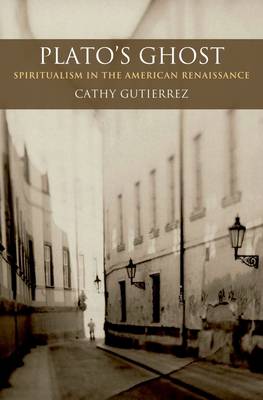
- Afhalen na 1 uur in een winkel met voorraad
- Gratis thuislevering in België vanaf € 30
- Ruim aanbod met 7 miljoen producten
- Afhalen na 1 uur in een winkel met voorraad
- Gratis thuislevering in België vanaf € 30
- Ruim aanbod met 7 miljoen producten
Omschrijving
In its day, spiritualism brought hundreds of thousands of Americans to seance tables and trance lectures. It has alternately been ridiculed as the apogee of fatuous credulity and hailed as a feminist movement. Its tricks have been exposed, its charlatans unmasked, and its heroes' names lost to posterity. In its day, however, its leaders were household names and politicians worried about capturing the Spiritualist vote. Cathy Gutierrez places Spiritualism in the context of the 19th-century American Renaissance. Although this epithet usually signifies the sudden blossoming of American letters, Gutierrez points to its original meaning: a cultural imagination enraptured with the past and the classics in particular, accompanied by a cultural efflorescence. Spiritualism, she contends, was the religious articulation of the American Renaissance, and the ramifications of looking backward for advice about the present were far-reaching. The Spiritualist movement, says Gutierrez, was a 'renaissance of the Renaissance, ' a culture in love with history as much as it trumpeted progress and futurity, and an expression of what constituted religious hope among burgeoning technology and colonialism. Rejecting Christian ideas about salvation, Spiritualists embraced Platonic and Neoplatonic ideas. Humans were shot through with the divine, rather than seen as helpless and inexorably corrupt sinners in the hands of a transcendent, angry God. Gutierrez's study of this fascinating and important movement is organized thematically. She analyzes Spiritualist conceptions of memory, marriage, medicine, and minds, explores such phenomena as machines for contacting the dead, spirit-photography, the idea of eternal spiritual affinity (which implied the necessity for marriage reform), the connection between health and spirituality, and mesmerism.
Specificaties
Betrokkenen
- Auteur(s):
- Uitgeverij:
Inhoud
- Aantal bladzijden:
- 232
- Taal:
- Engels
- Reeks:
Eigenschappen
- Productcode (EAN):
- 9780195388350
- Verschijningsdatum:
- 3/09/2009
- Uitvoering:
- Hardcover
- Formaat:
- Ongenaaid / garenloos gebonden
- Afmetingen:
- 155 mm x 236 mm
- Gewicht:
- 498 g

Alleen bij Standaard Boekhandel
Beoordelingen
We publiceren alleen reviews die voldoen aan de voorwaarden voor reviews. Bekijk onze voorwaarden voor reviews.









